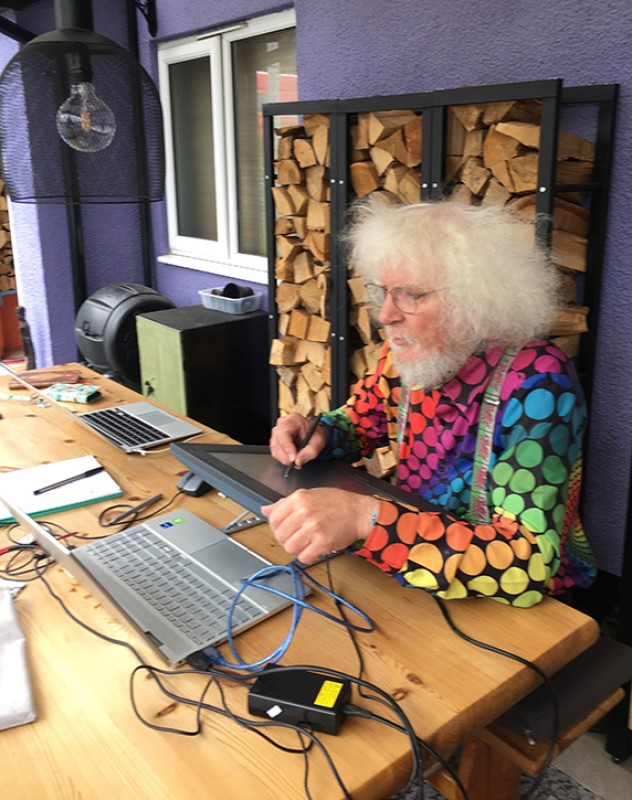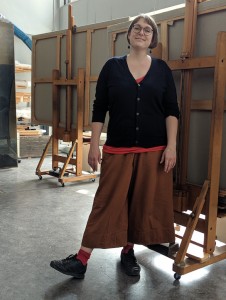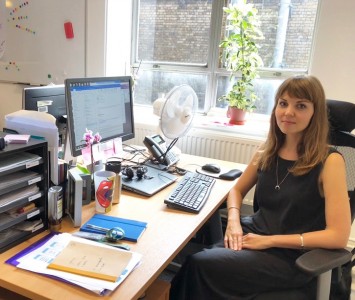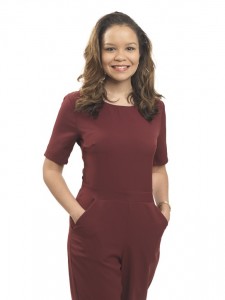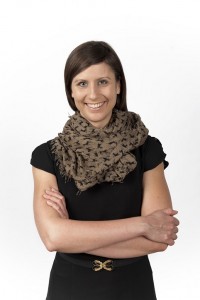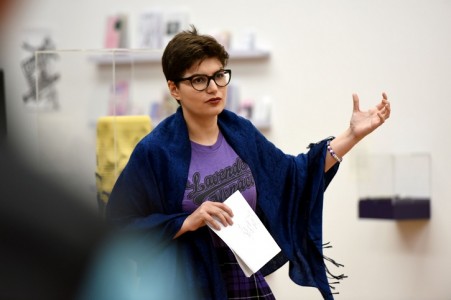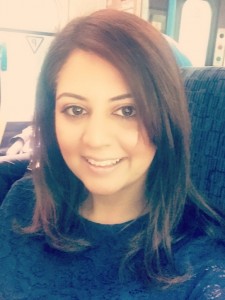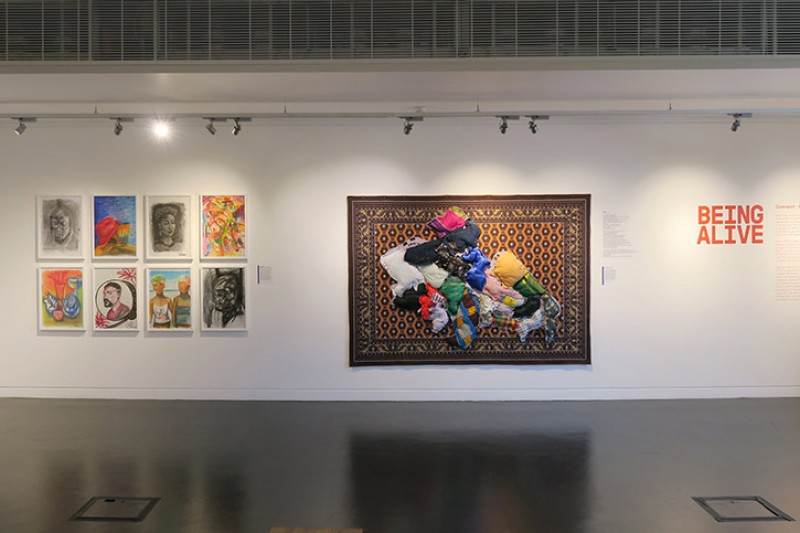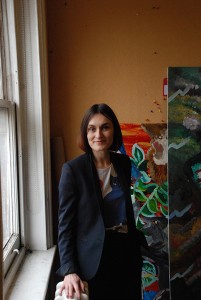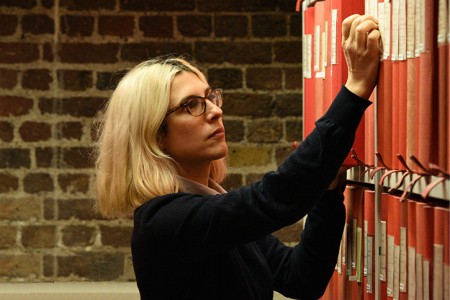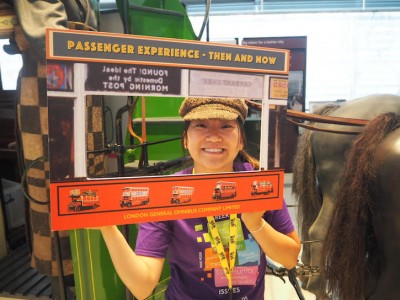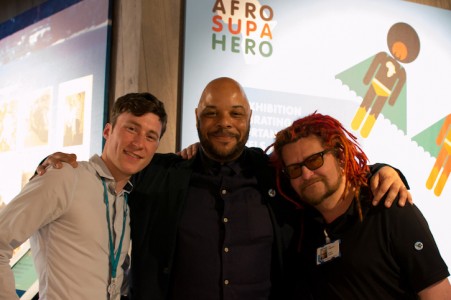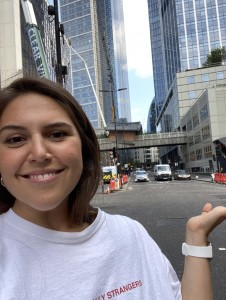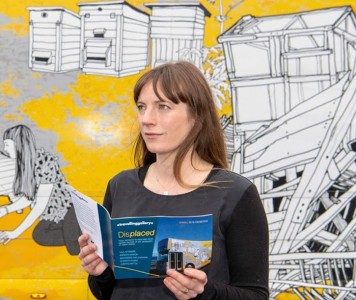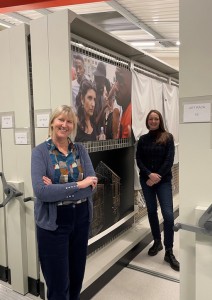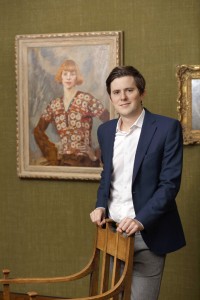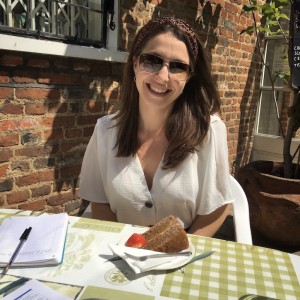For Art UK's 'Being...' series, we take a look at a day in the life of a professional working in the arts, heritage or museum sector.
Matthew delivering a Magic Lantern session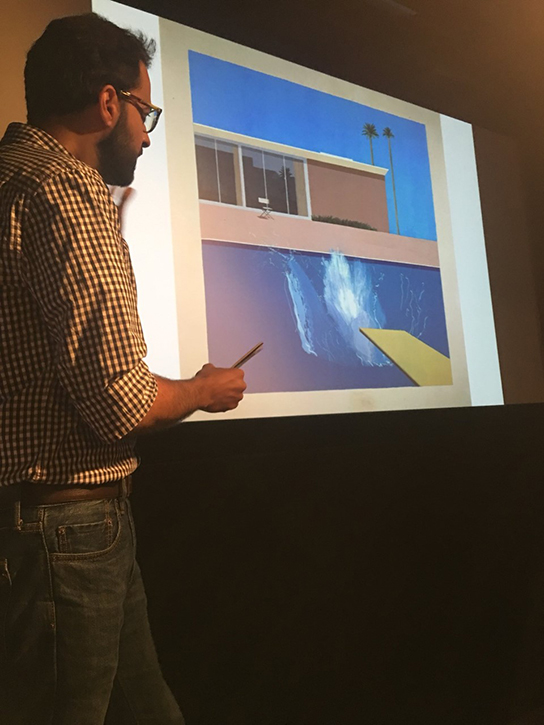
What's your role?
I run Magic Lantern, an educational charity that delivers interactive art history workshops in primary schools (www.magiclanternart.org.uk). I divide my time between all aspects of running the charity and delivering the workshops themselves. After studying Art History at Warwick University, I began a career in film publicity (which I still do part-time). Working in that field helped me gain skills I would later use in my work with Magic Lantern, including communication and visual analysis. I continued doing this full-time for 11 years, until 14 years ago when a chance encounter with a family friend introduced me to Magic Lantern.
That encounter was life-changing. I began running workshops in two London boroughs in 2006 and I immediately loved the experience. I have now delivered over 1,800 workshops and cover seven London boroughs. Along with my ten colleagues around the country we reach over 12,000 children each year.
Magic Lantern's ethos is to make art accessible to everyone. As soon as you expose children to works of art they not only love them but they are eager to point out everything they've noticed. At a time when kids are used to all kinds of digital and virtual media, it's heartening that a still, silent image can engage them so much. Children love putting themselves in the picture, trying to work out stories, emotions and clues, and imagining how each of their senses would respond if a painting came to life. It's an empowering and rewarding experience for them.
Magic Lantern participants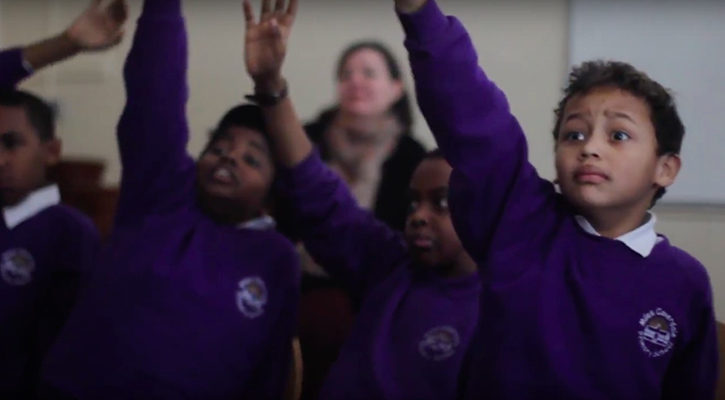
We also use art to open up the curriculum. There is no subject or topic that art cannot illuminate. The most popular subjects are probably the history ones as they lend themselves so well to visual learning, for example, Greek Myths, Ancient Egyptians, Victorians and the Second World War. I like a challenge, though, and some of the more unusual topics I've been asked to cover over the years include climate change, the history of chocolate and The Beatles (little did the teacher know I'm a Fab Four nerd!).
It never fails to surprise me how much children see in a painting like Holbein's The Ambassadors.
In 2010, I took over the running of Magic Lantern when our inspirational founder, Diana Schomberg, retired. Through my work with the charity, I've realised that if children are encouraged to participate in what is perceived as 'high' culture from a young age then it becomes normal to them and not something to be feared, as is the case with many adults. We try to make sure that the majority of the artworks we show can easily be seen in UK, show works thematically from a range of institutions and do things that are frowned upon in public spaces such as making lots of noise! One of the most rewarding parts of the job is when children I've previously visited tell me that they asked their parents to take them to a gallery following one of my workshops. They are so proud to have been able to tell them everything they've learned and even ask their parents the same kind of questions I asked them in the classroom.
Matthew delivering a Magic Lantern session
What's your morning routine?
On my childcare days, it's usually a bit of a whirlwind getting my two daughters ready and walking with them to school, although there's always time for a bowl of cereal and a cup of tea.
What's your journey to work like?
One of the things I like most about being freelance is that every day is different. If I'm doing workshops then I might need to take a combination of buses and tubes. The schools I visit are in north, west and east London so I've become pretty adept at knowing which route I need to take on any given day. If I'm not in a school then it generally means I'm doing admin in my office at home, which is the easiest commute in the world.
What's a typical day at work for you?
If I'm in a school then I will normally run two one-hour workshops in the morning and two in the afternoon. On average I'll show around seven to eight artworks in a session and plan them so that there's an age-appropriate activity for each work. With many of the older classes, years five and six, for example, we can spend ages discussing one painting with different students giving their thoughts and ideas. It never fails to surprise me how much children see in a painting like Holbein's The Ambassadors. The younger ones find it harder to sit still for long so I get them up to use their bodies and voices to bring the art to life all the way through the workshop. For example, they imagine they're about to get soaked by Hokusai's wave, make all the sounds they think they would hear in a Georgia O'Keefe cityscape or feel for themselves how uncomfortable the subject of Degas's Little Dancer sculpture must have felt.
It's not enough for me to like a painting anymore, I have to be confident that there is a way in for kids...
One of the things I love about running Magic Lantern workshops is that it gives the teachers a rare chance to observe their children not only learning new things but using their prior knowledge in a new context. Teachers are frequently surprised by the vocabulary their kids come out with or the connections they make to their own lives and experiences. Children who don't always participate in a traditional educational setting often join in with our workshops brilliantly. Looking at interesting new images can help in so many ways. For other children the use of empathy – imagining what characters in paintings are thinking, feeling and saying – can help build their own confidence.
Magic Lantern participants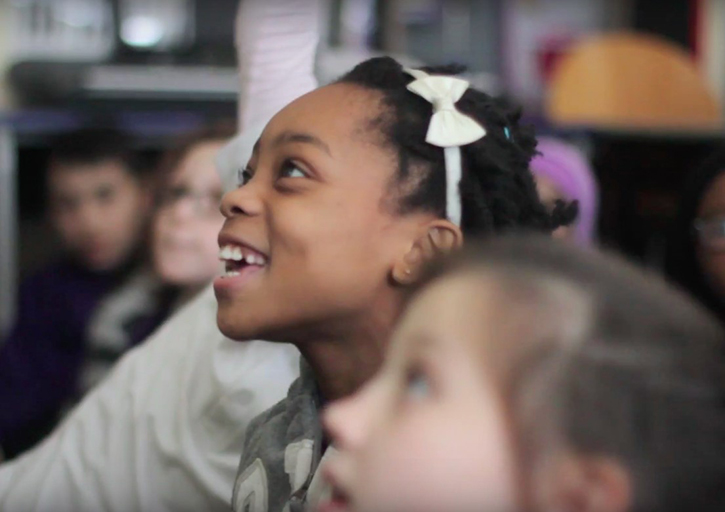
If it's an office day then I could be doing any number of tasks including designing a new flyer, raising the charity's profile via social media, filling in funding applications and all the day-to-day bookkeeping and team management that running any kind of organisation entails. My favourite admin jobs, though, are planning workshops and sourcing new artworks for them. I think of a lesson plan like I used to think of mix-tapes: I start with a painting that I know will absolutely grab the kids, something with noise and impact. This will hopefully engage them from the start. I keep things varied so there's always something interesting to look at and talk about. About halfway through I might break things up with a quick talk partner or mini-whiteboard activity. I generally save the more esoteric works, such as abstract paintings (which children have no fear of, by the way), until later on, when everyone's warmed up.
I try to get to as many exhibitions as I can. This is something I've always done but these days it's a chance to discover artworks to use in our workshops. It's not enough for me to like a painting anymore, I have to be confident that there is a way in for kids, whether through finding the right questions to ask or some sort of interaction that I feel will help them connect with it.
Magic Lantern participants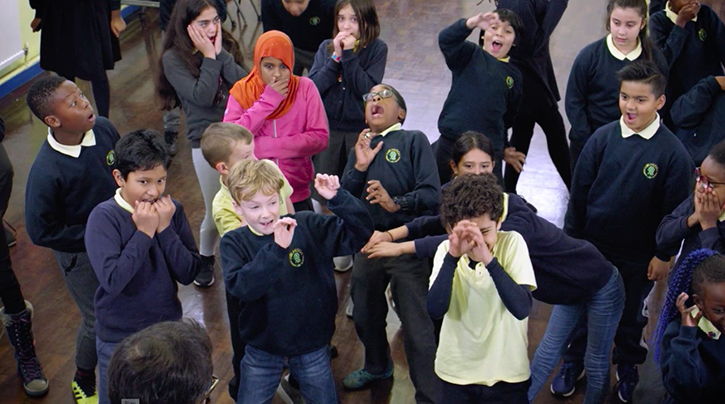
What's for lunch?
Because the schools I visit are all over London I have favourite spots depending on which school I'm in. If I'm in Bethnal Green then it's a fab vegan café called the Gallery. If it's Shepherd's Bush then it's Mr Falafel in the market. If I'm in the Isle of Dogs then it's the Mudchute city farm café. When a school invites me to have a school lunch then I know the kitchen has been 'Jamie Oliver-ed' and it's worth accepting. Unfortunately, there are many schools that specifically advise me not to try their meals…
What do you do after work?
I try to fit in a quick swim if there's time between finishing in a school and collecting the kids from school on my pick-up days. I've got into the habit of eating with the kids at around 5pm, so on the odd occasion I go out for dinner in the evening with my wife then I'm famished! Most evenings involve a bit of TV – preferably nothing too depressing – or reading. I tend to read more non-fiction than fiction, particularly history, although I've recently developed a slight obsession with the novels of Anthony Trollope.
Matthew Sanders, Director, Magic Lantern
Do you work in the arts, heritage or museum sector? Would you be kind enough to share an example of your working day for our 'Being...' series? Please get in touch with Art UK at pitches@artuk.org as we'd love to hear from you.

